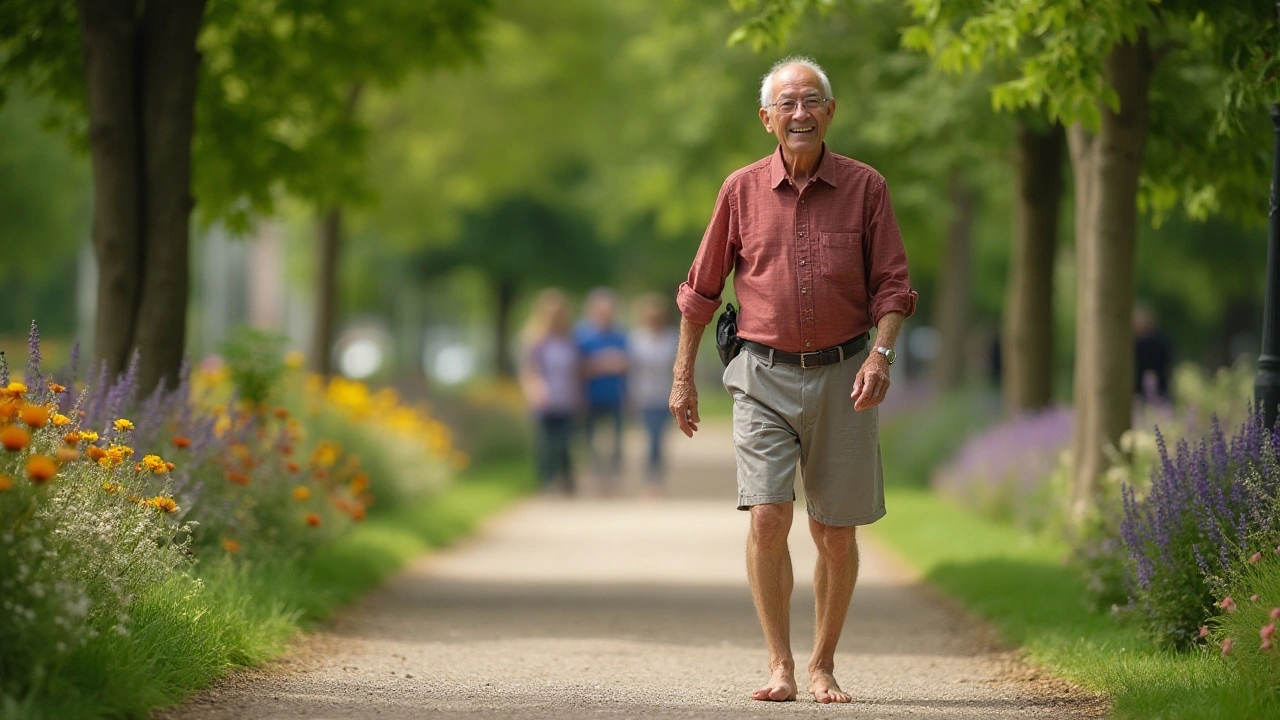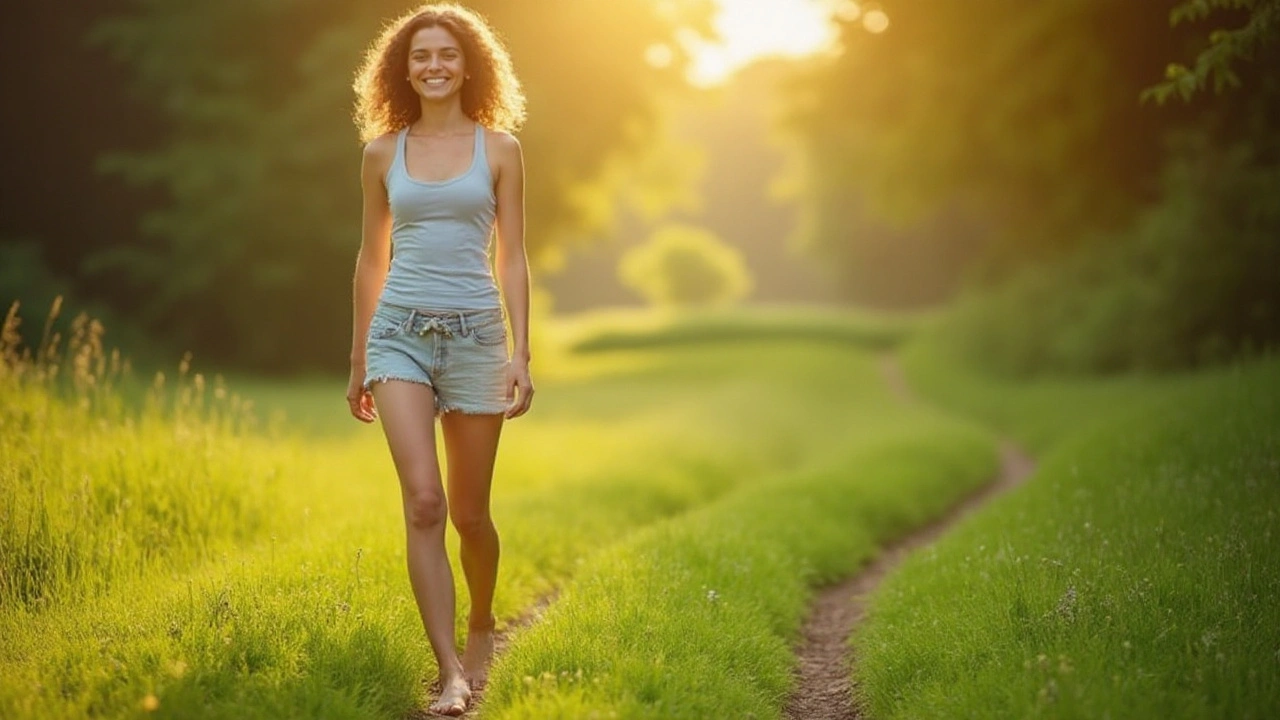Have you ever kicked off your shoes and felt the cool, soft grass beneath your feet? That simple pleasure isn't just a comforting sensation; it's a natural therapy with numerous health benefits. Walking barefoot, also known as 'earthing' or 'grounding,' has been shown to improve both physical and mental well-being.
The practice of barefoot walking is deeply rooted in our ancestral past, but in modern times, it's often overlooked. By peeling off our footwear and allowing our feet to connect directly with the earth, we can tap into an array of hidden health advantages. From enhancing posture to boosting mood, the benefits are worth exploring.
Interested in learning more? Let's dive into the science, health benefits, and practical tips to help you get started on your barefoot journey.
- The Science Behind Barefoot Walking
- Physical Health Benefits
- Mental Health Benefits
- Tips for Safe Barefoot Walking
The Science Behind Barefoot Walking
Walking barefoot, also known as barefoot walking or grounding, isn’t just a throwback to a time before shoe manufacturers existed. There's actual science that explains why this practice can be immensely beneficial for our overall health. When our feet make direct contact with the natural surfaces like grass, soil, or sand, our bodies can absorb electrons from the Earth. This process helps neutralize the free radicals that cause inflammation and aging.
This idea, called 'earthing,' was popularized by Clint Ober in his book “Earthing: The Most Important Health Discovery Ever?” He posited that when people isolate themselves from the earth by wearing shoes with synthetic soles, they lose this physical and electrical connection, which could lead to a range of health problems. Research supports this theory; for instance, a study published in the Journal of Alternative and Complementary Medicine found that grounding can reduce blood viscosity, a major factor in cardiovascular disease.
Our feet are incredibly complex structures, composed of 26 bones, 33 joints, and over a hundred muscles, tendons, and ligaments. They are designed for the purpose of walking on natural terrains. Modern shoes, with their arch supports and cushioned souls, alter the way our feet connect with the ground. This can lead to a range of issues like poor posture, back pain, and even knee problems. Walking barefoot allows our feet to move in the way they were naturally intended to, engaging muscles that typically lie dormant when we're in shoes.
“When we walk barefoot, not only do we ground ourselves, but we also engage the intrinsic muscles of the feet, which improves balance and mobility,” says Dr. James Stoxen, a chiropractor and author of “The Human Spring Approach.”
The benefits aren't just limited to physical changes. An interesting study by the University of California found that grounding can also have psychological benefits. Participants who spent time walking barefoot reported feeling less stressed and more energized. Scientists believe this might be due to the calming effect of physically connecting with the earth, which could help reduce cortisol levels—the body's main stress hormone.
What’s really fascinating is how accessible the practice is. Unlike complicated exercise routines or expensive health diets, walking barefoot is something that almost anyone can do. A walk in your backyard garden, a stroll on the beach, or a hike through the woods can all offer you the remarkable benefits discussed.
It’s worth noting, however, that one should ease into the practice of barefoot walking. Our feet, often encased in shoes for most of the day, might take some time to adjust to the new sensations and movements. Initial discomfort is common, but it usually fades as your feet become stronger and more resilient. Start by walking barefoot at home for short periods, and gradually increase the duration as you become more comfortable.
In summary, the science behind barefoot walking provides compelling evidence for why this simple practice can make a big difference in our lives. From improving physical posture to boosting mental well-being, grounding offers a range of benefits that are too significant to ignore.

Physical Health Benefits
Walking barefoot, more than just a nostalgic dip into childhood, comes with significant physical health perks. One major benefit is the improvement in posture. When your feet are in direct contact with the ground, your body naturally adjusts for optimal alignment. This helps reduce the strain on your joints and muscles, potentially decreasing the likelihood of common ailments like back pain or knee issues. The natural, uninhibited movements of your feet act as a sort of natural rehabilitation, correcting imbalances caused by years of restrictive footwear.
An often-overlooked advantage is the strengthening of foot muscles. Modern shoes, with their cushioned soles and arch support, can weaken the intrinsic muscles within our feet over time. By walking barefoot, you’re engaging these muscles in ways that traditional footwear doesn’t, leading to increased strength and flexibility. This strengthening has a cascading effect, improving overall foot health and balance, which is especially beneficial as we age.
Additionally, barefoot walking can enhance your proprioception—the body’s ability to perceive its own position in space. Improved proprioception is critical for coordination and balance, reducing the risk of falls and injuries. Imagine navigating a rocky path without stumbling or confidently walking on uneven terrain; these are the sorts of real-world benefits you can expect.
Believe it or not, walking barefoot also seems to have anti-inflammatory effects. A study published in the Journal of Environmental and Public Health suggested that direct contact with the earth can reduce inflammation and improve immune responses. The Earth's electrical charge influences our body's physiology, diminishing chronic inflammation that often leads to various diseases.
Then there's the matter of improved circulation. Direct ground contact helps stimulate the nerve endings in your feet, promoting better blood flow throughout your body. Enhanced circulation is crucial for overall health, helping to supply nutrients to cells and remove waste products more efficiently.
"There are even indications that barefoot walking may accelerate the healing of injuries, thanks to its positive effect on circulation," states Dr. James Oschman, a biophysicist and expert on grounding."
For those managing blood pressure, walking without shoes can be surprisingly effective. The relaxation and reduction in stress levels that come with connecting to the ground can lead to lower blood pressure, contributing to cardiovascular health. Walking barefoot can also aid in weight management. Enhanced blood flow and muscle activity help increase metabolism, making it easier to maintain a healthy weight.
Probably one of the least discussed benefits is the way barefoot walking can help to detoxify the body. Our feet have numerous sweat glands, and walking directly on the ground helps to stimulate these glands, aiding in the release of toxins through sweat. This natural detoxification method can boost your body's efficiency in eliminating harmful substances.
So how can you start reaping these benefits? Begin by incorporating short barefoot walks into your daily routine. Start with softer surfaces like grass or sand before moving on to harder terrains. Gradually increase the duration and frequency as your feet get used to this new form of exercise. The key is consistency and conscious effort to maintain proper form and alignment during these walks.

Mental Health Benefits
Walking barefoot does more than improve physical health; it has a profound impact on mental wellness too. The concept of grounding has grown in popularity, and for good reason. Letting your feet touch the earth can make a significant difference in reducing stress and anxiety levels. This simple activity connects you with nature, helping you to feel more centered and calm. It might seem too straightforward, but blending barefoot walking into your daily practices can improve your mental state over time.
When our feet touch the ground, we absorb electrons from the earth, which serve as natural antioxidants. These electrons help neutralize free radicals in the body, reducing stress and promoting a sense of tranquility. It's like a natural form of stress relief without the need for meditative music or complicated breathing techniques. Science supports this connection by showing that grounding reduces cortisol levels, the primary hormone linked to stress. Engaging directly with the earth offers a simple yet effective way to help balance the autonomic nervous system.
Dr. Gaetan Chevalier, a renowned researcher in integrative health, notes, "Grounding appears to reduce or even prevent the signs of inflammation following injury. This is highly significant and may have far-reaching health implications."
Walking barefoot also leads to mindfulness. When you walk without shoes, you're more aware of your surroundings, the texture of the ground, and your own movements. This heightened attention can pull you out of repetitive, anxiety-inducing thoughts and anchor you in the present moment. It's like a walking meditation, providing mental clarity and emotional relief. Incorporating even just a few minutes of barefoot walking into your day could help to clear your mind and lift your mood.
Additionally, engaging with the natural world leads to the release of endorphins, the body's "feel-good" hormones. These chemicals help to combat the daily grind of stress, promoting a natural state of happiness. The combination of fresh air, physical activity, and direct contact with nature offers a synergy that can enhance your emotional well-being. Making a habit of walking barefoot can thus become a powerful tool in alleviating symptoms of depression and anxiety. Imagine replacing a stressful lunch break with a serene walk in the park, your feet in direct contact with nature. It's an easy and enjoyable way to boost your mood.

Tips for Safe Barefoot Walking
Walking barefoot offers many health benefits, but it's crucial to do it safely to avoid injury. Your feet need time to adapt to the new sensation, especially if you've spent years walking in cushioned shoes. The transition should be gradual to strengthen your feet and ankles. Start by walking barefoot in your home, assessing how your feet feel on different types of flooring. This will give you a sense of your current tolerance and readiness to venture outside.
When you're ready to take it outdoors, choose soft surfaces like grass, soil, or sand. These natural surfaces are easier on your feet and can provide a therapeutic experience. Many experts recommend walking barefoot in your local park or on a sandy beach, as these environments do wonders for your feet and your mental well-being.
It's wise to inspect the ground carefully before stepping out. Check for sharp objects such as glass shards, rocks, or even thorns. A quick visual inspection will save you from painful injuries. If the area feels unsafe, consider wearing minimalist shoes or water shoes that offer some protection while still allowing a more natural foot movement.
Build up your barefoot sessions gradually. Start with short walks and slowly increase the duration as your feet become more accustomed. This gradual approach helps to develop foot strength and flexibility, reducing the risk of strains or injuries. Barefoot walking can be a great warm-up or cool-down activity, as it encourages natural foot movements and improves circulation.
Maintaining proper hygiene is just as important. Wash your feet thoroughly before and after your barefoot walks. Use a gentle scrub to clean off dirt and debris, and keep your toenails trimmed to prevent ingrown nails. Moisturizing your feet can also help to prevent dryness and cracking, making your barefoot experience more comfortable.
Listening to your body is key. Pay attention to any discomfort or pain in your feet, ankles, or legs. It's normal to feel some initial soreness as your muscles adjust, but persistent pain is a sign to take a break and perhaps consult a professional. A podiatrist or physical therapist can offer personalized advice based on your foot structure and walking habits.
For those new to barefoot walking, incorporating strengthening exercises can make the transition smoother. Toe curls, heel raises, and ankle rotations are excellent for building the necessary muscle strength. Yoga and Pilates also offer poses that enhance foot flexibility and balance, further preparing you for safe barefoot walks.
Consider the weather. Walking barefoot in extreme temperatures can be harmful. Hot pavement or icy ground can cause burns or frostbite. Opt for moderate weather conditions to keep your feet safe and comfortable. Light rain, on the other hand, can provide a refreshing walking experience, as long as the surface isn't slippery.
Lastly, try to be mindful during your walks. Enjoy the sensory experience of different textures and temperatures beneath your feet. Practice grounding or earthing exercises, which involve visualizing your connection to the earth and can have calming effects on your mind.
